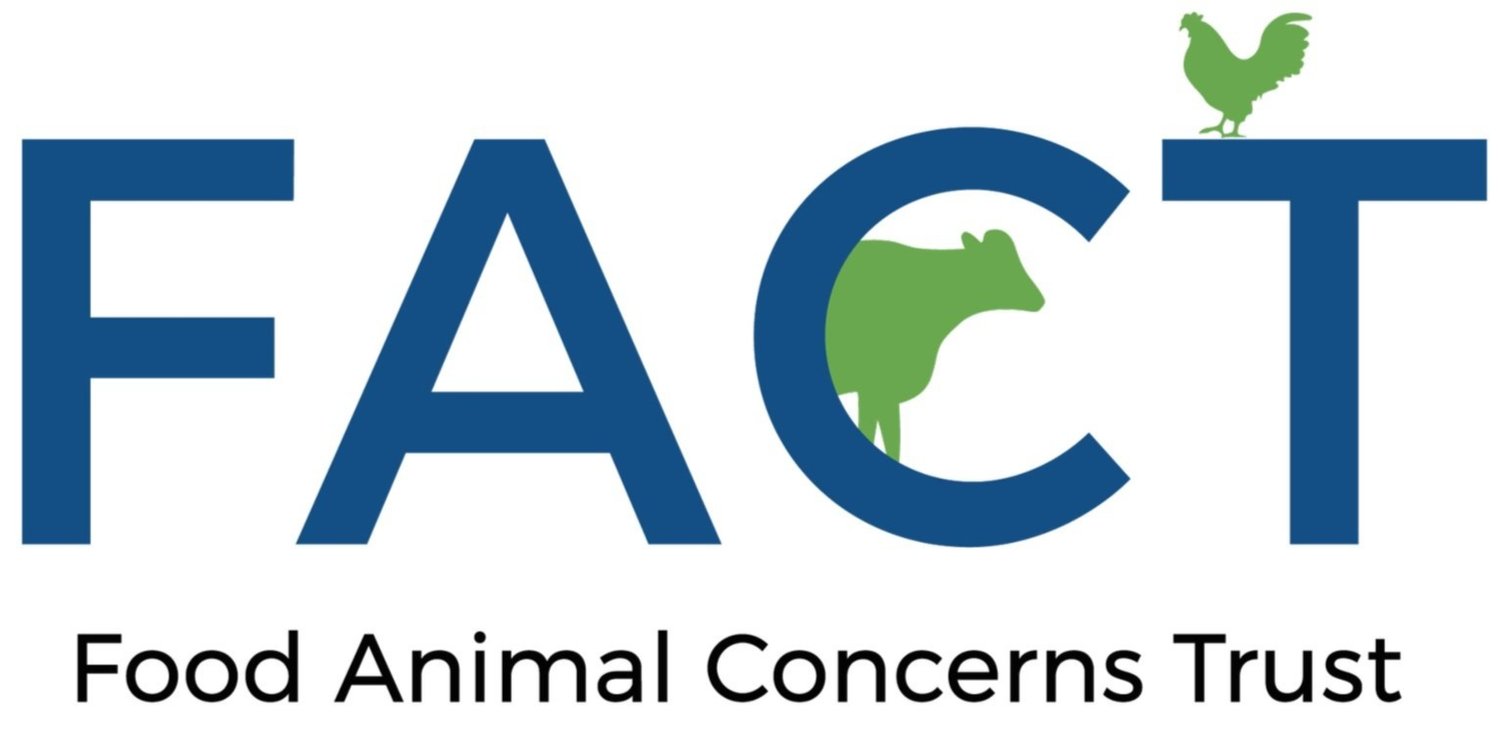Latest data show FDA Efforts to Support Antibiotic Stewardship in Veterinary Settings are failing
By Steve Roach, FACT’s Safe and Healthy Food Program Director
Antibiotic use in 2023 compared with use in 2017 and 2022. FQ refers to fluoroquinolone class antibiotics.
The U.S. Food and Drug Administration (FDA) recently released data on the use of antibiotics in food animals. The data show no progress in reducing the antibiotic overuse that leads to the spread of deadly antibiotic resistant superbugs since the FDA released a five-year action plan on antibiotic stewardship in veterinary settings in 2018. Antibiotic stewardship refers to making sure that antibiotics are used correctly and only when needed. Compared to 2017, the use of antibiotics in animal agriculture has gone up by 7%. The data can be broken out by species and when you do so, pigs and cattle look even worse going up by 24% and 10% respectively. In contrast, the chicken industry independent of government action has reduced its use of antibiotics by 51% since 2017. Looking at the change between 2022 and 2023, overall sales stayed about the same but there was a 10% increase in use in cattle and a 25% decrease in turkey use. We are using biomass adjusted sales as an indicator for antibiotic use since there is no system in place to collect antibiotic use data from feedlots and confined feeding operations in the U.S. Biomass adjusted sales is calculated by adding up the weight of the drugs sold for use in a given animal sector (i.e. cattle, pigs, chickens, and turkeys) and dividing by the mass of the animals. This way you can see if use is changing because the number of animals raised changed between years or because of something else like improved stewardship affected use per animal raised. For chickens improved stewardship is working. For the pig and cattle sectors, it clearly is not. In this blog I am using antibiotics primarily to refer to those the same as or related to those used in humans since the overuse of these can be directly linked to resistance in germs that make people sick.
One of the most troubling things the data show is a large rise in the use of fluoroquinolone antibiotics. The World Health Organization (WHO) calls these drugs highest priority critically important antibiotics because of their importance to treating seriously ill sick people. The WHO recommends they not be used in food animals at all because of their importance for human health. The use of fluoroquinolones increased by 18% since 2017 and by 10% just over the last year with the rise primarily in cattle.
The 2018 FDA action plan built on work started by the FDA in 2012 with the release of a document laying out FDA’s goals for reducing antibiotic overuse. This resulted in a pretty significant drop in antibiotic use in 2017 when FDA efforts to eliminate the use of antibiotics to make animals grow faster and require a veterinary order for antibiotics for use in feed and water were completed. These new restrictions only covered antibiotics likely to cause a superbug problem in people. The drop was over 35% in sales since the peak of sales in 2015. The FDA likes to point to this drop as an indicator of the impact of its actions. Yes, the FDA did have an impact and reduced antibiotic over in industrial animal agriculture in 2017, but was it enough and, if not, what has the FDA accomplished since then. Clearly, they did not think it was enough or they would not have released the 2018 plan to improve stewardship. As for what have they accomplished since then, the answer is nothing significant since use has risen and risen a lot in cattle and pigs.
The bacteria themselves also show us that the FDA did not do enough and that its actions since 2017 have not helped stop the spread of resistant superbugs. For cattle and pigs, the data is clear. The number of superbugs in animals did not go down in 2017 and in many cases has gotten worse since then. The data on the percent of bacteria that cannot be treated by specific drugs shows a clear contrast between chickens and pigs with resistance in indicator E. coli bacteria from chicken dropping before FDA action in 2017 and continuing after. Over the same time resistance to antibiotic drugs in pigs did not decline and instead continued to increase as illustrated below by data from FDA. Yes, the FDA took action in 2017, but it was not sufficient to have much impact on resistance. You can see the same contrast in the other indicator bacteria from the FDA Enterococcus and in the bacteria collected from cattle. For the cattle, there is a slight drop in some antibiotics but it is slight compared to the change in resistance from bacteria from chicken.
Resistance to antibiotics in E coli from chickens
Resistance to antibiotics in E coli from pigs
Resistance to antibiotics in E. coli from cattle
FDA action can have an impact but as the data indicates for the drop in antibiotic use in 2017. Clearly that drop was not large enough to have much impact and FDA has done nothing since then that has improved the situation. FACT will continue to push FDA to do what is needed including setting targets for antibiotic use reductions, prohibiting the use of antibiotics in animals that are not sick, and collecting antibiotic use data from giant livestock feeding operations.




